If you’ve ever been stuck with a dead battery, you know how important it is to know how to jump-start a vehicle. In fact, around 70% of battery failures happen due to cold weather, which can drain power fast. Being prepared to jump start vehicle dead battery can make all the difference in a pinch! Discover the best steps on how to jump start a car with cables for a smooth start.
A dead battery can happen to anyone, and it’s usually caused by something as simple as leaving the lights on for more than 10 minutes. Learning to jump-start your car isn’t just handy; it can save you from an unexpected delay.
Quick Look
To jump-start a dead battery, first connect the jumper cables in the correct order. Start the assisting vehicle, let it run for a few minutes, then start the dead vehicle. Once it’s running, disconnect the cables in reverse order.
Is it safe to jump-start a vehicle in the rain?
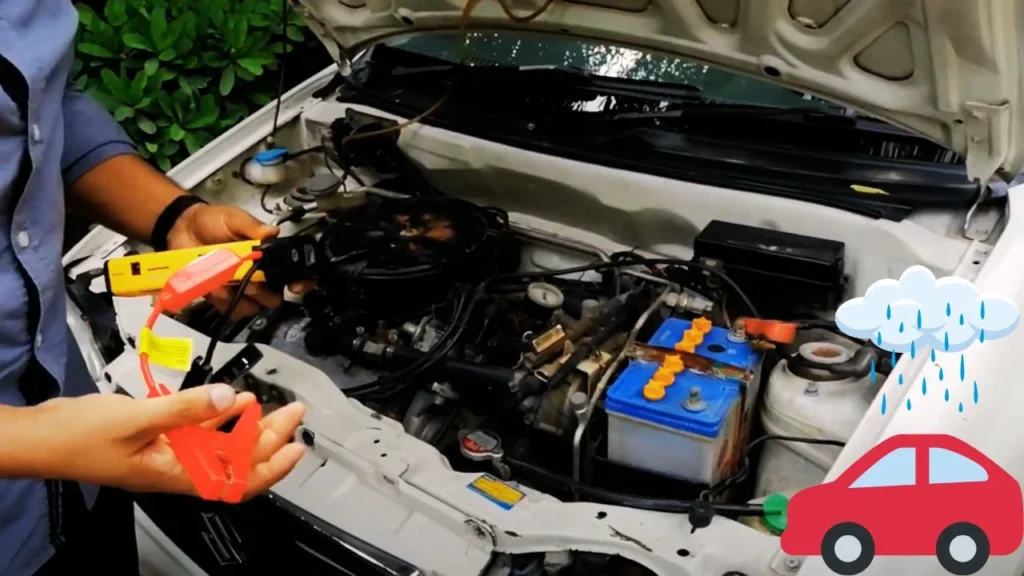
Yes, it’s generally safe to jump-start a vehicle in the rain, but you should take extra precautions to stay safe. Begin by ensuring the cables and connections remain dry to prevent any short-circuiting.
Wear gloves and, if possible, a raincoat to avoid direct contact with wet surfaces. Always inspect the battery for damage or leaks, as these can increase the risk of electric shock in wet conditions.
Position both vehicles so they’re stable and away from standing water. Following these steps allows you to safely jump-start your vehicle even in rainy weather without additional risks. Learn how long it takes to jump start a car with our quick guide.
Getting to Know Your Car Battery
In my experience, understanding how car batteries work can really help when jump-starting a vehicle. Typically, car batteries operate on a 12-volt system, delivering power to start the engine and keep electronics running. Most car batteries last around 3-5 years, but factors like weather and driving habits can shorten that lifespan.
Car batteries store electrical energy in the form of chemical reactions. When you start the car, it pulls about 300-400 amps to get the engine running. If the battery is drained or weakened, it can’t supply this power, leaving the car unresponsive. Knowing how this system works clarifies why jump-starting is necessary.
A dead battery often results from simple oversights like leaving the lights on or using electronics with the engine off. In fact, studies show that up to 60% of dead battery incidents happen due to such minor mistakes.
Tools Required
Jump-starting a dead battery requires the right tools to ensure safety and efficiency. Let’s go over the essentials you’ll need, whether you’re using another vehicle or a portable jump starter.
- Jumper Cables: At least 10 feet long and 4-6 gauge for optimal power transfer.
- Portable Jump Starter: 1,000 to 2,000 peak amps; ideal when no other vehicle is available.
- Heavy-Duty Clamps: 400-amp rating or higher for secure connections.
- Protective Gear: Gloves and safety glasses to protect against sparks or acid leaks.
Step-by-Step Guide to Jump Start Vehicle Dead Battery
Jump-starting a dead battery can seem daunting, but with the right steps, it’s straightforward. Here’s a quick, practical guide to get your vehicle back up and running safely. Follow these steps to handle each part confidently.
Step 1: Position the Vehicles Properly

Place the vehicles nose-to-nose, about 12–18 inches apart, ensuring they’re not touching. This setup allows for an easy cable connection and prevents accidental contact.
Step 2: Turn Off All Electronics
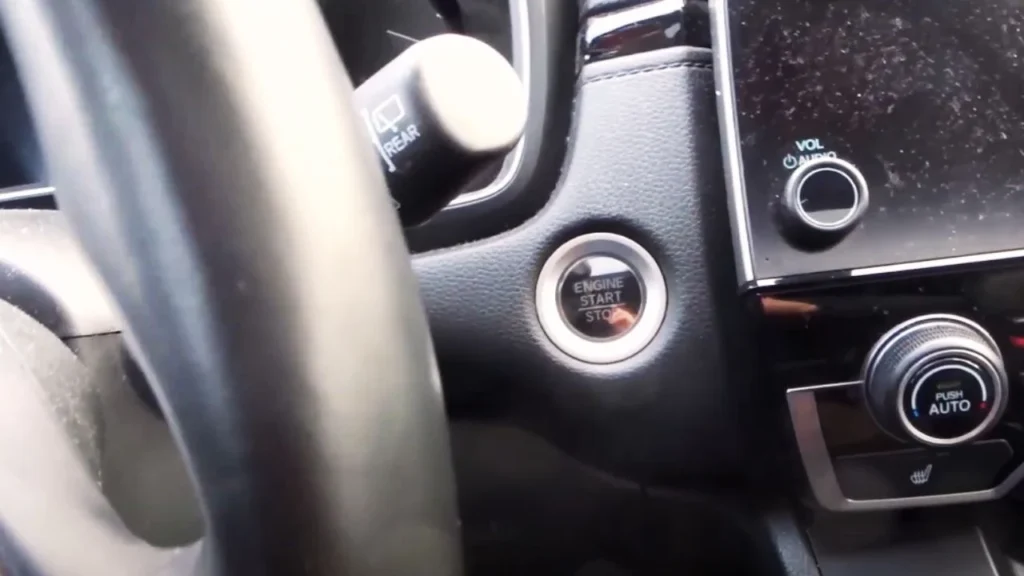
Before connecting anything, turn off both ignitions and all electrical components, such as lights and radios. This reduces the chance of sparking when attaching the cables.
Step 3: Connect the Positive (Red) Clamp
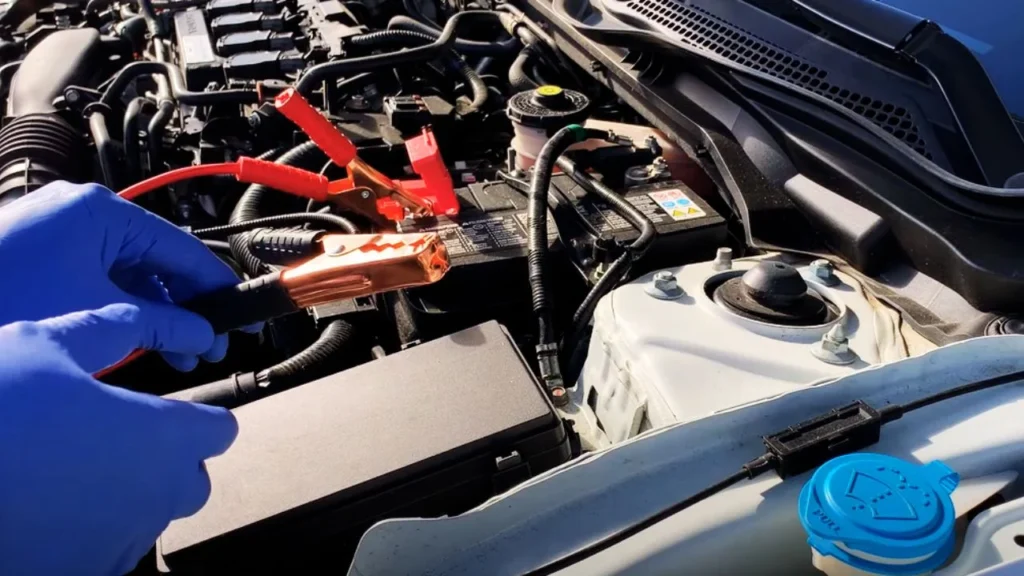
Attach the red clamp to the positive terminal of the dead battery, usually marked with a “+” symbol. Then, secure the other end of the red clamp to the positive terminal of the working battery.
Step 4: Attach the Negative (Black) Clamp
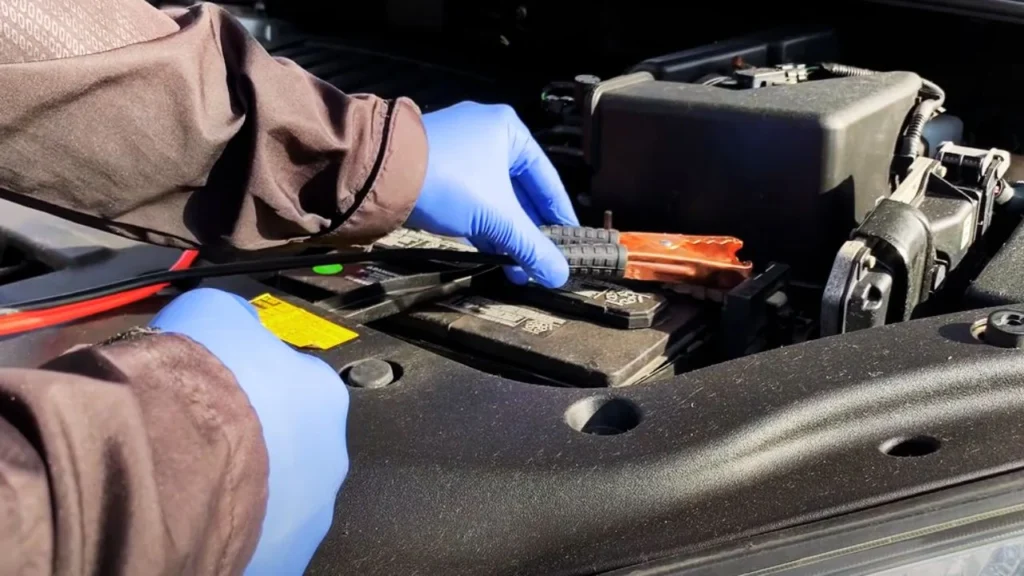
Connect the black clamp to the negative terminal on the working battery. For the other end, attach it to an unpainted metal surface on the dead vehicle’s frame or engine block to complete the circuit safely.
Step 5: Start the Working Vehicle
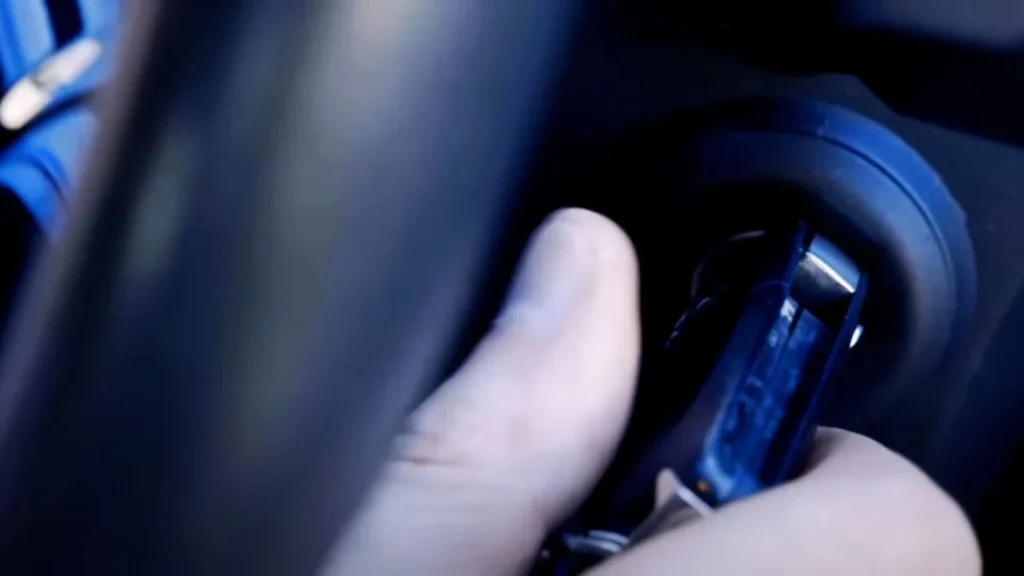
Turn on the car with the good battery and let it run for about 5–10 minutes. This initial boost helps build a charge in the dead battery, increasing its chances of starting up.
Step 6: Start the Dead Vehicle
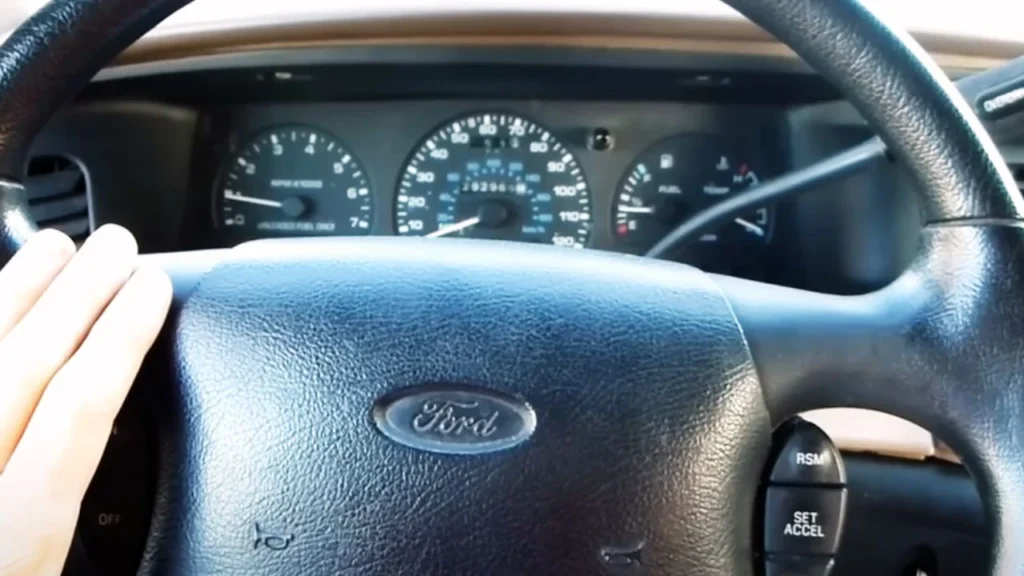
Try starting the car with the dead battery. If it doesn’t respond, wait a minute or two and try again. The waiting time gives the dead battery more power to turn over.
Step 7: Disconnect the Cables in Reverse Order
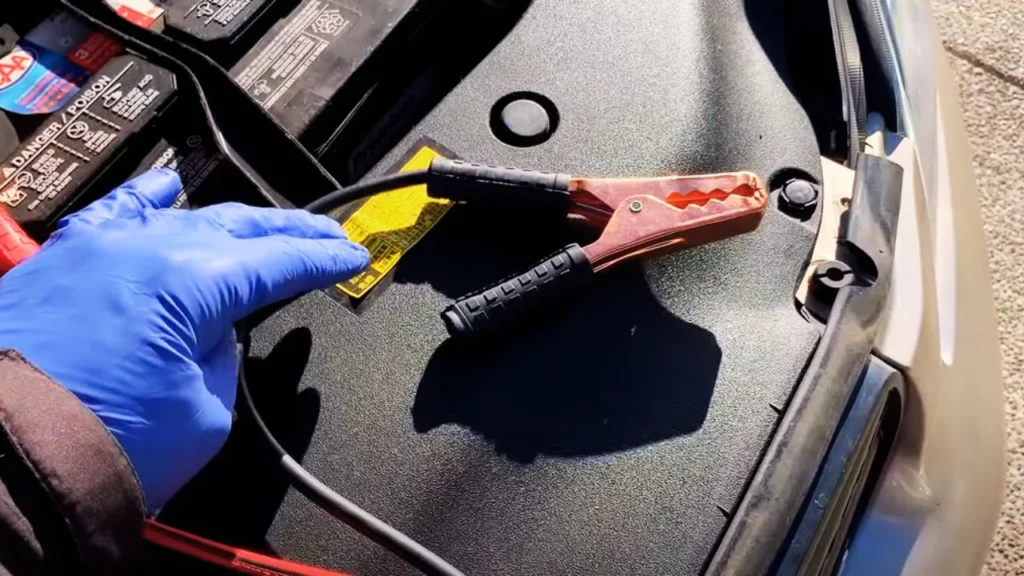
Begin with the black clamp on the revived car, then remove the black clamp from the working battery. Next, detach the red clamp from the working battery and finally the red clamp from the previously dead battery.
Step 8: Let the Revived Vehicle Run

Once your vehicle is running, keep it on for at least 30 minutes to help recharge the battery. This additional run time allows the alternator to fully charge the battery for future use. Find out if a Tesla can jump start a car in our informative article.
Post-Jump-Start Actions
Once the car is running again, I usually let it idle for at least 30 minutes to help the battery recharge. This simple step ensures the alternator has time to supply about 80% of the battery’s power, which is often enough for another start if needed.
After jump-starting, I make it a point to drive around for a while, preferably at speeds above 40 mph. Driving for about 20 miles at these speeds lets the battery regain strength, which can prevent another dead battery situation the next time you need to start the car.
If I’ve jump-started my car recently, I keep a close watch on how it performs over the next few days. For instance, if it struggles to start more than twice in 24 hours, it might be time to think about getting a new battery or consulting a mechanic.
Alternative Methods for Jump-Starting
When a second vehicle isn’t available, don’t worry! There are still ways to get your car running again. Let’s dive into some easy, effective methods like using a portable jump starter or push-starting your vehicle.
Using a Portable Jump Starter
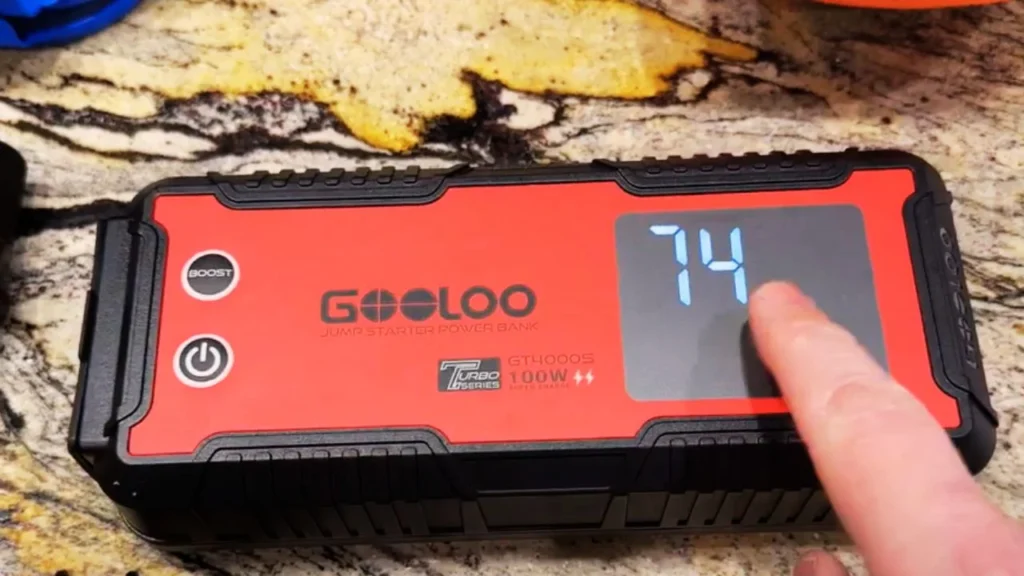
Sometimes, you won’t have a second vehicle or someone to help. In those cases, a portable jump starter can be a lifesaver. These devices pack quite a punch, often delivering between 400 and 1,000 amps. With one on hand, you can jump-start a dead battery in just minutes.
Push-Starting a Manual Car

For manual cars, push-starting is another option if you have some help. To do this, you’ll need at least two people – one to steer and another to push. First, get the car into second gear, press the clutch, and turn the ignition. As soon as the car reaches about 5 mph, release the clutch to kickstart the engine.
Which Method is Best for You?
Each method has its pros. A portable jump starter is compact and can be used about 20 times before recharging, which is super convenient for road trips. Push-starting, though more physical, is always free and can be handy if you don’t have a jump starter around
Final Words
After jump-starting, I always let my car run for at least 30 minutes to recharge the battery fully. This simple step prevents future stalls, ensuring I’m not left stranded. Keeping jumper cables or a portable jump starter on hand has saved me multiple times, offering peace of mind and readiness for unexpected issues. With regular maintenance and these few precautions, I feel prepared for battery failures. So, remember this guide – it’s all about safety and being ready!
FAQs
What should I check before attempting to jump-start my car?
Before jump-starting, check if the battery terminals are clean and free from corrosion. Ensure both vehicles are in park or neutral with the parking brake engaged. Inspect the jumper cables for any wear or exposed wires to prevent sparking.
Verify that both batteries have the same voltage (typically 12 volts). Lastly, look for signs of damage, like cracks or leaks in the battery, as jump-starting could pose a safety risk if the battery is compromised.
Can I use a regular household battery to jump-start a car?
No, a regular household battery, such as AA or AAA batteries, doesn’t provide sufficient voltage or current to jump-start a car. Car batteries typically require around 12 volts and a substantial current to turn over the engine, which household batteries cannot deliver.
Attempting to use household batteries could result in damage or even create safety hazards. Instead, use a portable jump starter, another car battery, or call for roadside assistance if needed. Check out the best portable car battery jump starter to ensure you’re always prepared on the road.
How long do jumper cables need to stay connected during a jump-start?
Jumper cables should stay connected for around 5-10 minutes, depending on the battery’s condition. Start by running the assisting vehicle’s engine for a few minutes, allowing some charge to transfer. Then, attempt to start the car with the dead battery.
If it doesn’t start immediately, wait a few more minutes before trying again. Once the car starts, carefully disconnect the cables in the reverse order to avoid sparking or accidental short-circuiting.
